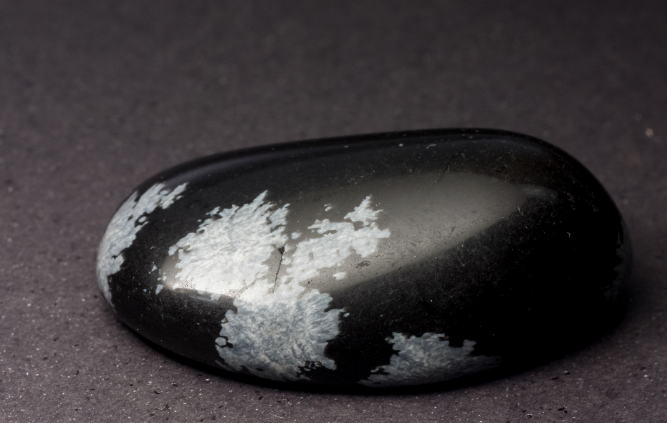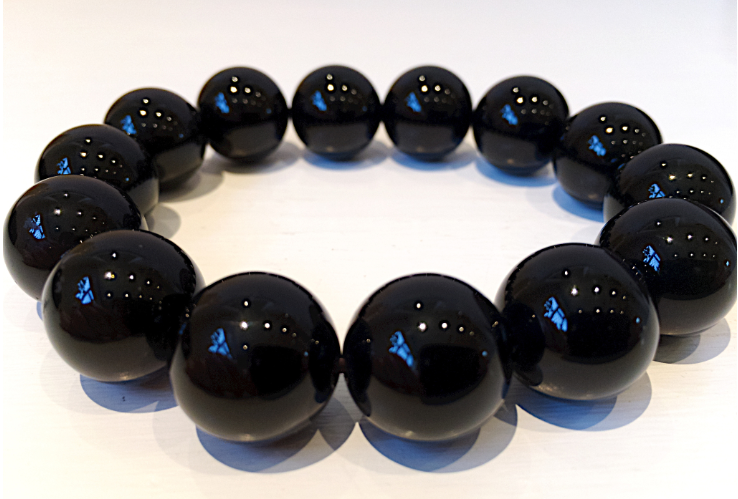What is the difference between black agate and obsidian
Black Agate and Obsidian are two common types of black gemstones that are often confused due to their similar appearance. However, these two minerals exhibit significant differences in composition, formation processes, and uses. This article will delve into the distinctions between Black Agate and Obsidian, aiding you in better understanding these mysterious and beautiful stones.
1、Basic Definitions of Black Agate and Obsidian
Black Agate, a common mineral belonging to the quartz family, is composed of silicate minerals and typically exhibits black or dark hues. It is frequently found in jewelry and decorative items. The surface of Black Agate is smooth and glossy, making it suitable for crafting rings, necklaces, and other accessories.
Obsidian is a natural volcanic glass formed when lava rapidly cools after a volcanic eruption. Its primary composition is silicon dioxide, but unlike ordinary glass, Obsidian typically lacks a crystalline structure and instead exhibits a smooth glassy texture. The gloss of Obsidian is usually vitreous, with its black surface sometimes displaying dark textures or reflective effects.
2、Composition and Formation Processes
Composition of Black Agate:
Black Agate is primarily composed of silicon dioxide (SiO2), a variant of quartz. It forms during the cooling of magma produced by geological activity, often within fractures in sedimentary or volcanic rocks. The color of Black Agate stems from trace elements it contains, such as iron and manganese.
Composition of Obsidian:
The primary component of Obsidian is also silicon dioxide (SiO2), but its formation process differs from that of Black Agate. Obsidian forms as volcanic lava rapidly solidifies into volcanic glass during cooling. Due to its extremely rapid cooling, Obsidian does not have time to crystallize, resulting in its smooth glassy texture.
3、Appearance Characteristics
Appearance of Black Agate:
Black Agate typically appears as a uniform black or dark color, sometimes with fine textures. Its surface is smooth and may exhibit patterns similar to marble. The gloss of Agate is relatively soft, making it suitable for processing into various shapes for jewelry.
Appearance of Obsidian:
The gloss of Obsidian resembles glass, with a surface that is usually very smooth and reflective. It can appear deep black but may also exhibit subtle color variations or gloss effects, such as metallic reflections or iridescent colors. The cut faces of Obsidian can be very sharp, making it suitable for making blades or decorative items.
4、Physical Properties and Applications
Physical Properties of Black Agate:
Black Agate has a relatively high hardness, typically ranging from 6-7 on the Mohs scale. It has a certain degree of abrasion resistance, making it suitable for making everyday wearable jewelry. Black Agate is also believed to have certain health benefits and is often used as a feng shui stone or emotional regulation gemstone.
Physical Properties of Obsidian:
Obsidian has a lower hardness, typically ranging from 5-6 on the Mohs scale. Due to its glassy texture, Obsidian is prone to fracture and requires careful handling during cutting. In prehistoric times, Obsidian was used for tools and weapons due to its sharp edges. In modern times, it is primarily used for jewelry, sculptural art, and decorative purposes.
5、Common Uses and Cultural Symbolism
Uses of Black Agate:
Due to its beautiful appearance and durability, Black Agate is widely used in the production of jewelry. It holds an important place in feng shui and is often believed to bring good luck and emotional stability. Additionally, Black Agate is considered a protective stone in some cultures, capable of warding off negative energy.
Uses of Obsidian:
In prehistoric times, Obsidian was used for tools and weapons, such as scrapers and arrows. In modern society, Obsidian is primarily used for making jewelry, sculptural art, and decorative items. Due to its glassy texture, Obsidian is often used in artistic creations, particularly in ancient American cultures where it held significant importance.
6、How to Distinguish Between Black Agate and Obsidian
Distinguishing between Black Agate and Obsidian can be approached from the following aspects:
Gloss and Surface Texture: Black Agate has a softer gloss with a smooth surface that lacks a glassy texture; Obsidian, on the other hand, has a glassy gloss with a noticeable reflective surface.
Hardness Test: Black Agate has a higher hardness and can be tested using the Mohs hardness scale; Obsidian has a lower hardness and is prone to scratching.
Fracture Observation: The fracture of Black Agate typically displays uniform textures; the fracture of Obsidian exhibits sharp glassy fracture patterns.
Despite their visual similarities, Black Agate and Obsidian exhibit significant differences in composition, formation processes, physical properties, and uses. Understanding these distinctions can help you make a more informed decision when selecting jewelry. Whether you choose the classic elegance of Black Agate or the modern uniqueness of Obsidian, each gemstone possesses its own unique charm and value.



Rose Quartz Healing for Women Anxiety Crystal Bracelet
$29.00Original price was: $29.00.$23.00Current price is: $23.00.